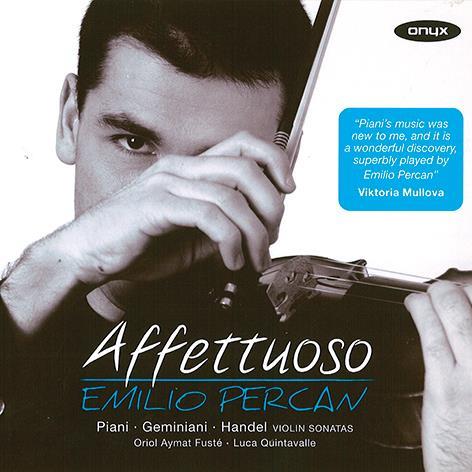
The Strad Issue: January 2012
Description: A fast and furious approach to Baroque sonatas has gains and losses
Musicians: Emilio Percan (Baroque violin) Oriol Aymat Fusté (Baroque cello) Luca Quintavalle (harpsichord)
Composer: Piani, Geminiani, Handel
Captured in a clear and resonant recording, Emilio Percan’s programme of Baroque repertoire is loosely connected by the descriptor ‘affettuoso’ (affectionate), which heads the opening movements of five of its constituent sonatas. Percan performs four of Piani’s (aka Desplanes’s) op.1 sonatas (1712) with remarkable athleticism, flair and substantial regard for the composer’s instructions on bowing, fingering, ornamentation and other expressive detail. He demonstrates an imaginative sense of fantasy in the opening preludes, but the various dance movements beg more faithful characterisation and some final chords seem overly aggressive.
Percan is more convincing in the two sonatas by Geminiani and in Handel’s D major Sonata. Anyone listening to the quick movements will be captivated by the vivacious rhythms, light and airy textures, neat articulation and spirited interchanges between violin and continuo. Sometimes his interpretative approach smacks more of modern than Baroque technique, a conclusion backed up by the photograph on the CD’s cover. His brisk tempos and overzealous ornamentation, coupled with Luca Quintavalle’s busy harpsichord continuo contribution, also occasionally reduce the music to slick anonymity. However, the unassuming eloquence of the slower music is tellingly captured, notably the Adagio of Geminiani’s Sonata no.8, enhanced by some winning rubato, and the Larghetto of Handel’s Sonata.
ROBIN STOWELL







































No comments yet